Anthem has been a great experience so far, but an undeniably bumpy ride. Plagued by launch issues and weird problems that are largely still unsolved, the game can still be described with our earlier picture of a ‘beautiful disaster’.
Nonetheless, it does have a host of good points that have seen the Gaming Instincts team put in well over 100 hours of gameplay in just a week since launch. Let’s take a look at exactly what that experience was like, and we’ll finish by rating Anthem and discussing whether it’s worth purchasing right now.
Today, I’ll be walking you through our complete Anthem launch review: everything we think, feel and predict about the game in its current state.
A Premier to Remember
Like many games in the ‘looter shooter’ genre, it would be fair to say that Anthem’s launch was not without its issues. Many issues, in fact. Those who paid for the Origin and EA access programs to get the game a week early were largely disappointed, and we’ve been feeling that backlash over the past week or so with the release of some fairly scathing reviews. These are not unprecedented, unfortunately, and even worse, a lot of our worries about the game’s ‘full official launch’ on February 22nd were correct.
Anthem, after the day one patch, remains a largely unreliable experience. I’m going to be separating its issues into two broad areas in this review: gameplay issues and design problems. For some, design problems can be largely ignored, especially those on console – but many hardcore players will be frustrated by them, and so they are still worth discussing. As for gameplay: Anthem displays an incredible world and narrative, but those aspects are hampered by the little footwork it makes on the lessons of its predecessors in both the shooter and MMO genres.
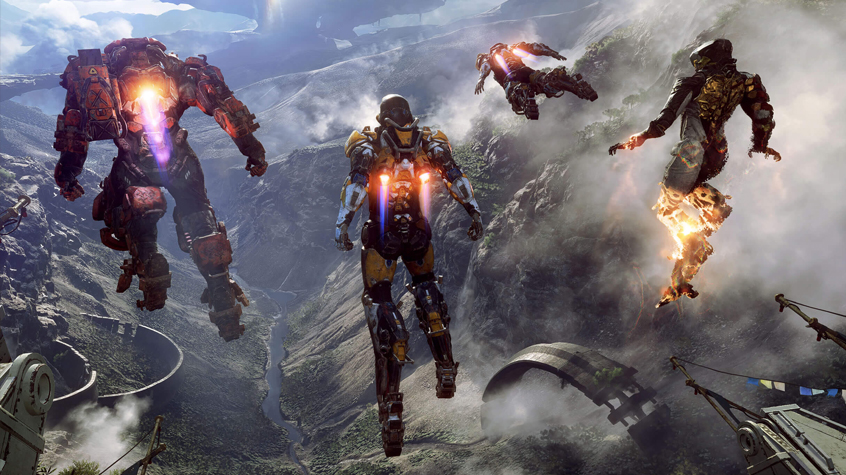
A Beautiful, But Singular World
To start with, Anthem’s world is stunning. It’s undeniably impressive. The verticality is unlike any other game I’ve played before, and that delivers on the fantasy of flying an awesome suit around very well. Flight, in general, is extremely solid. Visually, too, Anthem can easily brag to be one of the most beautiful games we’ve ever seen. With gorgeous textures, exceptional lighting and great use of colour (barring a few odd items), the world is stunningly rendered.
Unfortunately, however, there is just this one world. As the developers also discussed, there’s only really one ‘zone’ or map. The lush jungle is incredible, but the player never really gets a chance to look at anything else until the final mission of the game. What is there is very well done, but you’re going to spending nearly all of your time in the jungle, a cave, or a stone building. That scenery changes very little, despite the large distances you travel, and I can’t help but feel like some changes of scenery would have done a lot to aid the pacing and really hallmark different locations with a unique feel. There aren’t really any unique locations, however – so that’s an issue all of its own, too.
Gameplay itself revolves are setting out on missions, very MMO-like and traditional. That’s absolutely fine, but the lack of variance is quite shocking. Ultimately, you’re going to find yourself killing bugs, Outlaws, or Dominion soldiers while doing any of three things: defending a point for a certain amount of time, finding relic pieces and returning them, or finding orbs and returning them. Occasionally, you’ll be given a brief puzzle or asked to collect something else, but largely that’s it.
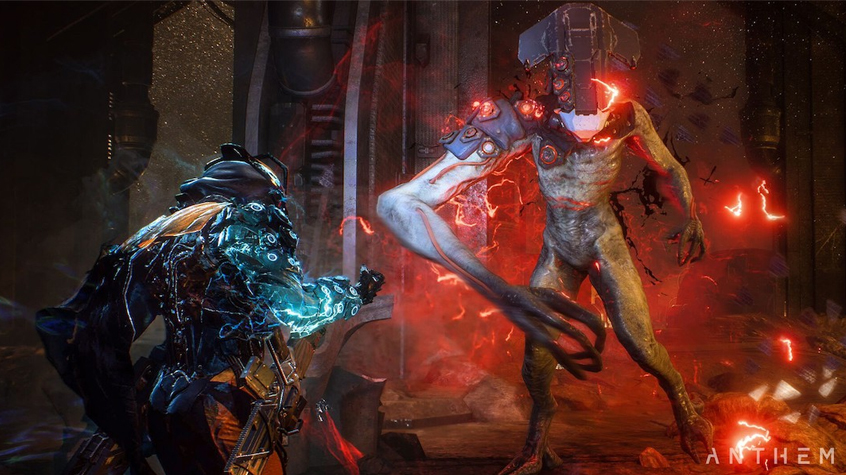
The Combat Loop and Feedback
Now, I actually quite enjoyed the raw combat loop, but it’s undeniable that there’s really not a lot there. Gameplay is probably best described as ‘cool’, but with little true substance. Enemy AI is terrible, and the enemy design doesn’t really make up for it either. Enemies without shields are quickly dispatched, and those with shields are often spongy and frustrating. While I accept that as a factor of a loot-based game, Anthem’s combat doesn’t really allow the player much genuine interaction.
From your perspective, you’ll be spending your time casting whatever abilities you have as often as possible on whatever you can see. When damaged, you’ll need to fly away or hide behind something and wait to recover your shield. That, ultimately, is your gameplay loop. There are very few decisions to be made, as your abilities are up frequently enough that you don’t really need to think about when you use them.
What I found most frustrating was how enemies do damage. Largely, enemies will move directly towards you until they are in range to do damage, and then they will begin shooting you, or casting their spells if they are an Elementalist. Enemy shots and abilities are usually hit-scan, which means that if they target you, they are going to hit you whether you move or not, and often even if you move behind cover (for some unknown reason that has led to my death at the hands of many a sniper).
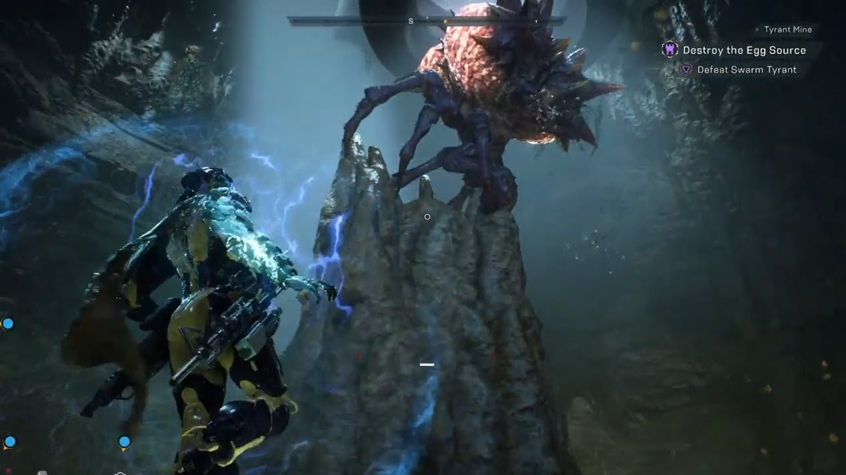
Something Feels ‘Dodgy’
Now, I’ve played my way through all of Dark Souls and Bloodborne, so I’d like to think I know my way around a dodge or two, but often dodging feels more like a ‘move out of the enemy’s range’ instead of the ‘I made you miss me’ that it should be. If enough enemies decide at any given moment that they are going to shoot you, it’s likely that you’ll die. It’s as simple as that.
Boss fights are even more mysterious and frustrating. Large AOE damage effects have bizarre, unclear hitboxes that may-or-may-not hit you depending on how the game feels. There are some rewarding interactions, like being able to shoot the boss’s exploding-balls to stop them from damaging you, but then you have to stand still in the tiny space you’ve created while you wait for the others to explode (that also, may or may not hit you anyway).
Anthem needs to make enemy damage much clearer. Players should be able to see or hear when enemies are going to damage them. They should have a chance to express their skill with a well-timed dodge or clever movement. In Destiny, enemies fire projectiles that the player can learn and avoid by strafing or dashing, crouching or simply moving around. Over time, players learn their enemies’ telegraphs, animations, and sounds, and the really good players seem to walk through storms of enemy fire seemingly without taking a hit. There’s no skill expression like that in Anthem. Instead, if your stats are high enough, you’ll live when the attack hits. If not, or if enough attacks hit you at the same time, you’re dead. It’s as simple, and frustrating, as that.
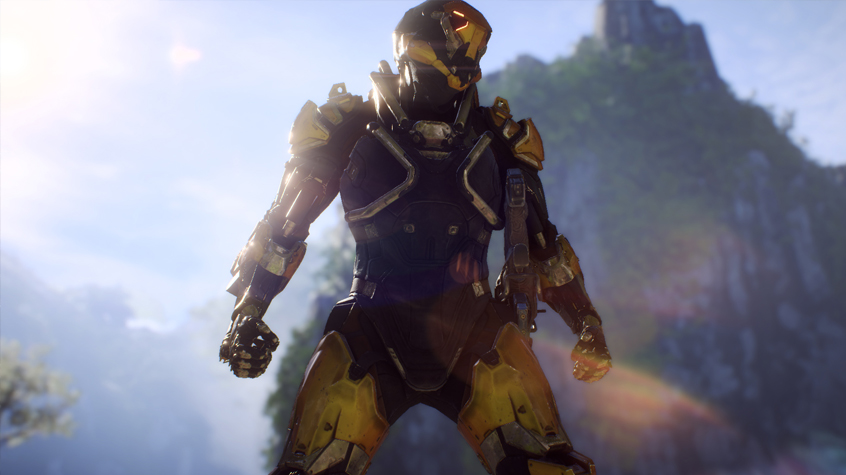
A Lack of Feedback
I feel like making enemy shots and abilities into more obvious projectiles would help, as would improving on the various indicators and radars in the game (don’t even get me started on that little green objective radar). It doesn’t help that when you die, you either respawn back at the nearest launch point (which could be miles away), or wait until an ally can come and revive you. That’s a gameplay staple that I completely accept, but when you die in Anthem it feels like there was nothing you could really do, so that screen is all the more infuriating. Take the lightning stage of the final boss, for example; you can try all you want to dodge and learn the patterns, but eventually something you can’t see or hear will hit you and if you don’t have enough health, goodbye.
Many times I found myself arriving first at a group of enemies, and therefore being simultaneously targeted by everything in range, and despite my best attempts to dodge, duck, dip, dive, and dodge, enough hit-scan shots were lined up on me that I was instantly sent to the red-screen of shame.
Combat is plagued by a strange delay, too. Damage takes a while to actually happen when something lands, either by or on you. Enemies seem to absorb shots without any reaction (or sound), as do you. Melee attacks are floaty and unreliable, which is a shame because the animations are extremely cool – they just don’t feel like they’re really landing on the enemy.
There simply isn’t enough feedback happening. Players should know when they are being shot at. They should be able to see enemy abilities and their hit-boxes clearly, they should be able to hear where enemies are, and they should feel the impact of damage both from them and against them in order to understand the flow of combat. That is not happening right now, and as a result, combat is a mixture of methodically spamming whatever equipment you have into the face of an enemy, and occasionally being one-shot when the game decides it’s had enough of your antics.
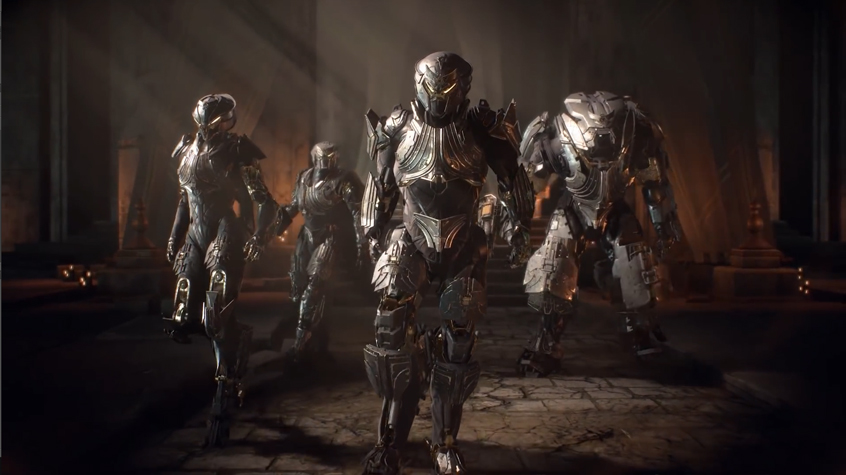
An Arsenal to Enjoy
The equipment options in the game are exciting to use, and the Masterwork/Legendary versions feel like they have genuinely interesting nuances that could lead to awesome build ideas and diversity. In terms of visuals, they also look amazing. For certain, the design team did an absolutely stellar job in regards to how things look and animate in combat – with the exception of the aforementioned floaty-ness.
However, despite there being a good number of equipment options per Javelin, upgrades tend not to feel very impactful before Masterwork/Legendary. That’s quite typical of looter games, and is perfectly irrelevant when you reach endgame, as long as there are enough options at endgame to use. So far, it seems that there is good variety and some really ingenious design ideas, with the potential to add more as the game grows. That seems fair enough to me, especially with the confirmation of more gear coming from the developers.
On the opposite side, however, using gear does feel fairly one-dimensional, especially pre-Masterwork. I feel like increase gear damage by around 50-100% and cooldowns by at least 100% would make choices feel more impactful and reduce the overall screen clutter, but admittedly would reduce the ‘cool factor’ too. It’s a balancing act, and a tough one too – especially when a good proportion of your damage is coming from your abilities in general.
Basic Loot is One-Dimensional
Weapons and Equipment in the game are more varied than they first appear, and that’s largely because everything looks more-or-less the same. Until end-game, you’ll basically be choosing between a few styles of gun (and generally picking the one with the most damage). The javelin abilities are actually much better, and a lot more fun to use, but ultimately you’ll only ever go out into the world of Anthem with two ‘damage’ abilities, a ‘support’ skill, and your class-set ultimate.
That’s not a lot, and as I’ve said, you’ll mostly be using them on cooldown without much thought. Abilities are throwaway, and with a few notable exceptions, most are simply projectile-based damage. I particularly liked the ones that played with range and movement, such as Interceptor’s Spark Dash for bouncing around groups of enemies, or the Colossus’ Shock Coil for sweet AOE damage around the suit.
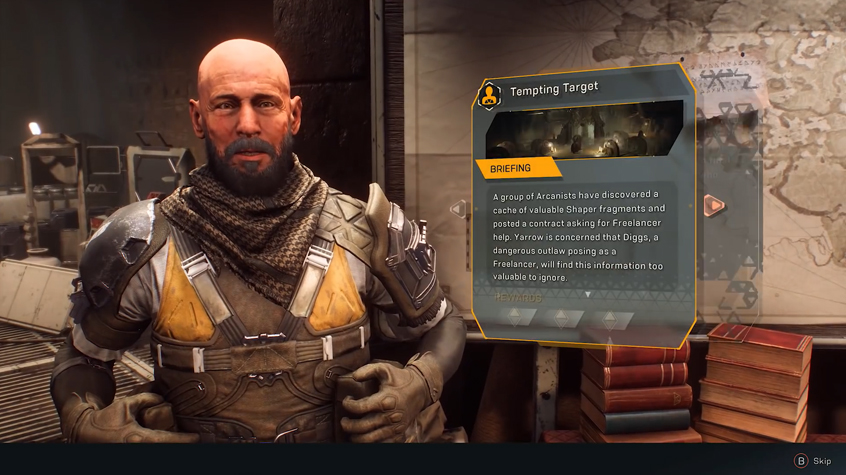
Contracts are a great way to quickly jump into the action and gear up.
As far as weapon drops, higher power weapons will simply do more damage. Inscriptions, which are easily the most interesting part of the equipment-choosing process, do require some thought to utilize. The system, however, is bugged and a chore to utilize. Ignoring the already frustrating menus, there’s no amalgamated stats screen. That means you’ll have to add up all your ‘Luck’, ‘Impact’, or ‘Force’ in order to find out how much you have. Even that’s all after you’ve googled to find out what those stats actually do – because the game won’t even tell you.
Endgame Loot is Better, of Course
All that said, the Masterwork/Legendary items are genuinely amazing. Having one drop feels just as dopamine-inducingly great as it does in Diablo, and the reveal screen at the end of a mission is the only bit worth enjoying in the end-screens. These items have suffixes that will radically change how you use them, and genuinely impact your gameplay loop. Suddenly, you will have something to think about utilizing in combat, and as your collection grows, so too will your power and decision-making in fights.
Upon completing a full set of challenges for each of these items, you’ll receive a blueprint for crafting that item, and can therefore re-roll specific Masterwork/Legendary items to get exactly the inscriptions you want (a bit like Diablo’s Kanai’s cube). I actually really like this system, as it rewards lots of play at end-game and encourages you to try new things and combinations in your builds. There’s a lot of potential here, I simply wish there were more and more of these items to play with.
It’s worth also discussing that you’ll have heard me say Masterwork/Legendary quite a few times at this point, as if they are more-or-less the same. In essence, they are – with Legendary versions of items being more powerful variants. That point emphasizes the weirdness of the difficulty gap around end-game. Jumps in difficulty between the Grandmaster tiers is very significant, but you’ll only gain 20-30 power in that time. That means you’ll be relying a whole lot on team play and clever build combinations.
That’s very cool, but I don’t see why, with a system that reaches up to 500 power levels, how the tiers couldn’t have been more easily spaced. It’s a similar issue to the one Destiny 2 is having with its light levels, and I’m sure we’ll see Anthem improve upon that scaling as time goes on. Right now, however, it feels like Grandmaster III is intentionally impossible in order to make ‘aspirational content’ effectively ‘unachievable content’ in order to lengthen its lifespan. I like the idea though, and hope that they continue to improve upon it, because it has the potential to really encourage players to push themselves and their builds to the max, if they so desire.
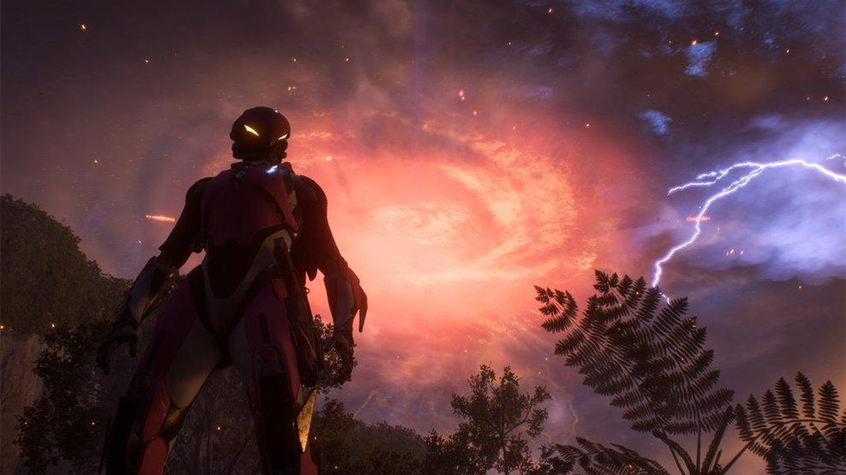
Freeplay Has Genuine Potential
Freeplay surprised me. I thought gameplay out in the open world would be dull and lifeless, and I was actually wrong. Events, especially the thematic ones promised in the upcoming weeks (such as the current invading Titan bosses) are awesome, and present another reason for players to go searching in Freeplay. It’s mostly used for gathering crafting materials, though, as missions and strongholds are better for XP and loot respectively.
You’ll note that I don’t really mention crafting much in this review, and that’s really because I never use it. It’s useful, but it’s also really hard to see which crafting blueprints you have and where to get them from, never mind getting and using the right ones. This might change when more people are using Masterwork/Legendary crafting to create builds after players have come to grips with the system, however – a bit like Diablo’s Death’s Breath. Time will tell.
I would have preferred a few more players in Free Play to take advantage of events, but it’s looking increasingly unlikely. There are quite a few UI quality-of-life changes that would be great, too, such as being able to set waypoints on the map for allies, or in fact, simply being able to see where world events are (even if only after another player discovers them). The map itself is also quite unhelpful in general, with a strange sense of scale and little recognizable features to help guide you. Those are small improvements, but would add a lot to the readability and usability of Freeplay, at least. The bigger changes, like more players and bosses, are sadly unlikely.
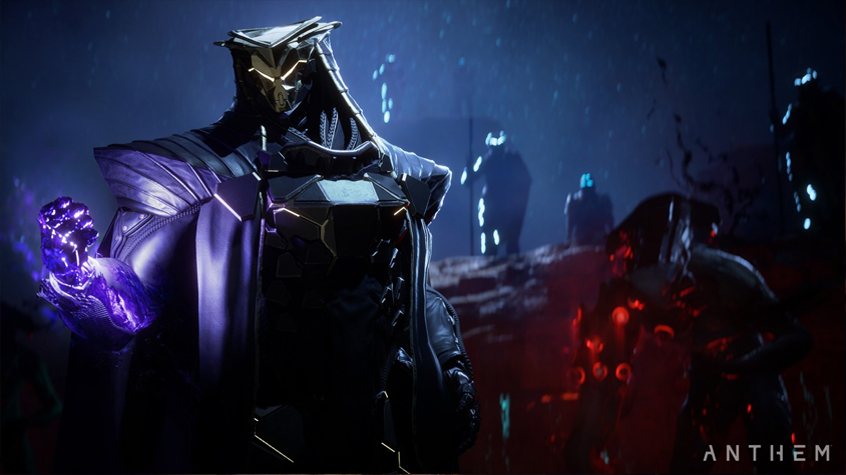
A Bioware Story Like No Other
Anthem’s story is a difficult topic, and the source of much debate at the moment. Some are gripped, some bored, and some are simply lost. I think the world of Anthem is actually a really interesting narrative space, with some well-developed characters. Owen is genuinely hilarious, and then tragic. The Monitor, too, is excellent. Slowly and purposefully voiced, he retains the Thanos/Joker-esque notion of being a quiet man who’s used to getting what he wants, or else. Some of his scripted lines are a little too cliché, but as an antagonist, I found him overall very convincing.
Like the others, however, I feel he needed more screen time to really make an impact. We never see him in his Javelin in the actual gameplay. Meanwhile, other characters that we do see are largely indistinguishable from the regular NPC allies.
For Bioware, the storytelling is strangely jarring. I feel it could have been a suitably gripping experience had it managed to get the player involved within and outside of gameplay, but the method of storytelling is stunted and erratic. In one moment, the player is completing a mundane task while listening to some mildly-relevant pleasantries from the NPC characters – then you finish the mission and are taken back to Fort Tarsis to listen to some more NPC’s from the oddly first-person perspective.
With just a little of Bioware’s classic cinematography, flair, and a dash of their famous ability to integrate story and gameplay, this could have really captivated players. Unfortunately, it left me feeling unengaged, especially in regards to my own dialogue options. Bioware had a surprisingly competent, and divergent narrative experience in their Star-Wars MMO, ‘The Old Republic’. In that game, the player’s choices and actions had genuine consequences, but there’s sadly none of that in Anthem.
For a brief moment, we catch a glimpse of what the story could have been like when we visit Princess Zhim. This mission has an introduction, with intrigue and conversation, misinformation and clues. We then complete a few new gameplay tasks, and then arrive at Zhim’s hideout. The mission is then pleasantly interrupted by an amazing cut scene that showcases some of that aforementioned Bioware narrative genius. Sadly, we’re then rudely awakened in our gameplay Javelin again, and briefly kill some more enemies before the mission ends. Had this mission not been full of loading screens and jarring swaps back into gameplay, it could really have been something special. Despite that, I’d still consider it one of the best missions.
I think that the loading screens and swapping between full gameplay and Fort Tarsis is the issue in terms of immersion. I see no reason we couldn’t have had a Mass Effect style gameplay-into-dialogue loop that would have kept players engaged and immersed in the world without breaking them away. Sadly any narrative tempo that was generated is lost, hindered by loading screens and bland mission tasks while some NPC chatters away in your ear. What could have been a beautifully amalgamated mix of gameplay and storytelling is instead moments of repetitive mission-based gameplay, followed by the dredge of NPC dialogue, albeit brightened up by the occasional ineffectual dialogue option, just to check that the player hasn’t fallen asleep.
It could have been so much more. But the damaged momentum leaves players disillusioned with the plot and fed up with the character voices. The campaign’s ending perfectly encapsulates how I feel about the narrative experience overall: it was rushed, clumsy, and ended before it had really gotten on its feet.
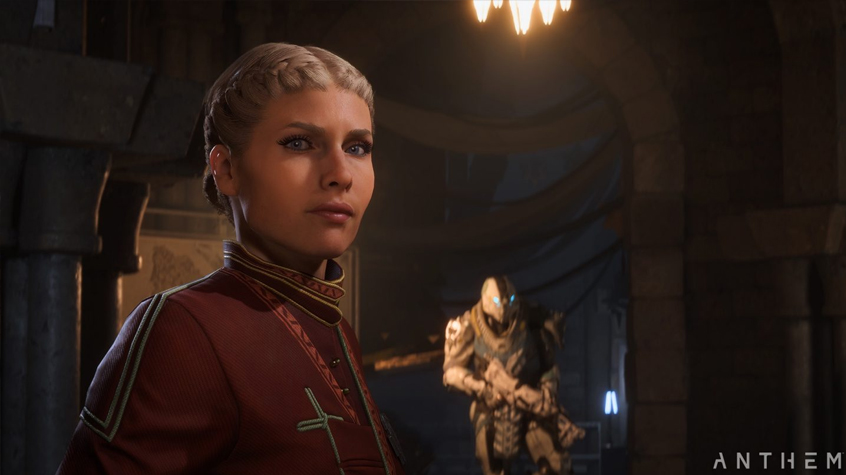
Design Issues Aplenty
And finally, onto the various superfluous issues that Anthem has. Most immediately, there is just so much waiting around. Delay feels built into everything. Menu’s take a while to load and transition slowly and awkwardly. Missions take ages to update, and can leave you standing, waiting for a new waypoint for what feels like a millennia (for no reason, too, from a design perspective).
Nowhere is this frustration felt more clearly than in the loading screens. There’s a loading screen for everything. Want to change your loadout before a mission? Loading screen. Done with that? Loading screen. Want to get into your javelin? Loading screen. Launch the mission? Loading screen. Took too long to load? Loading screen to teleport you through the mission to where your teammates are. Moving into that cave? Loading screen. Done with the cave? Loading screen. Finished the mission? Guess what? You get the idea.
In an environment where games like the Division 2 are almost completely loading-screen free, Anthem feels like it’s running on a fundamentally flawed system. Something is wrong here, for sure – the game is horribly optimised on this front and despite improvements in the February 22nd patch, the number of loading screens still persists. It’s unavoidable at this point. It’s just another factor that you’ll have to deal with while it breaks your immersion and increases your frustration.
Looking Further On
Waiting is something we’re going to have to do a lot of in a wider aspect, too. The ‘live service’ nature of the game is one that I’ve been celebrating, especially due to its ‘cost free’ approach to DLC. Players can look forward to a whole year of content, and the road map seems to have a great deal coming our way, with regular changes, updates, and new things to play around with. That’s absolutely great, but I still have fears that it’s going to be too-little, too-late.
Anthem’s real end-game is still to come, with a new Stronghold on the way (for a total of four Stronghold missions), and then cataclysms in May. That’s quite a while away. Anthem might genuinely not have many players still around by then. It’s a genuine worry. Currently, there are also no leaderboards, timed events, or competition of any kind, really. Essentially, there’s no real reason to keep playing once you complete your build by farming items. So there’s no real reason to farm those items in the first place, besides to… er… make farming more items easier?
Sure, the point of a looter-shooter is loot. But isn’t it also to get a chance to show that sweet build off by completing a challenge the fastest? Isn’t it to show your friends? Or to contribute to a guild or faction? Currently none of that exists either, leading to one of the most unsatisfying plateaus I’ve ever experienced. Anthem simply stops at a certain point, with no reason to continue playing.
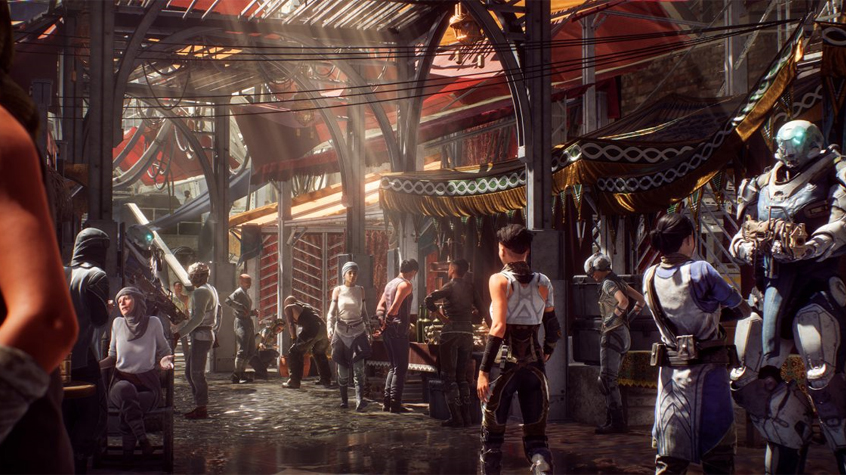
Concluding Thoughts (and Score)
That’s the saddest part for me, because Anthem was genuinely my recipe for the perfect game. It has all the ingredients to be the most captivating, rewarding, and satisfying gaming experience that we’ve ever seen, but falls short in so many ways. Anthem’s recipe for greatness seems to have been baked with sub-standard ingredients, and certainly not for long enough, somehow. All of that leaves more than just a bitter taste in the mouth.
I think that most of the criticism I’ve seen of Anthem is fair, largely because people got so invested in this game. I don’t think we over-hyped it or expected too much, because the community as a whole was so cautiously optimistic that what we got was ultimately what we expected. It feels like if Anthem could have had another few months, perhaps even a year longer in development, that we would have had the opportunity to get our hands on something utterly breathtaking. I still believe that the game will be brilliant after the coming year of content has been added, but unfortunately, in its current state, Anthem almost isn’t worth it.
It’s worth mentioning that this impression of the game is based upon both its initial state when it soft-launched on February 15th, and its ‘full-launch’ on February 22nd. It’s also worth noting that the live-service nature of this review means that it could only be valid for a few months, as is the nature of constantly-changing games. I really hope that the proposed upcoming changes do invalidate a lot of the criticisms of this review, and embrace the potential for Anthem, because that’s what I feel both the players and the developers deserve.
A truly critical mind-set would award Anthem with a lower score, and I wanted to give it a higher one because I love Anthem, but it pragmatically does not deserve it in its current state. We’re giving Anthem a 6.0 out of 10. It has absolutely enormous potential, and sadly doesn’t really live up to it at this point. Despite its issues, Anthem’s world is still a stunning one, and the game is undeniably fun to play. It is beautifully flawed, and really hasn’t come into its own yet; plagued by frustrations and underwhelming engagement, Anthem is a mere shadow of what it could have been. It does, however, still achieve a worthwhile experience, especially for those who don’t mind waiting for when this creeping caterpillar eventually blossoms into an all-looting all-shooting butterfly.
Hungry for more Anthem? Check out our other coverage here:
ANTHEM – NEW PLAYER SURVIVAL GUIDE (LAUNCH READY)
ANTHEM’S ROADMAP IS JUST WHAT WE ASKED FOR
No related posts.



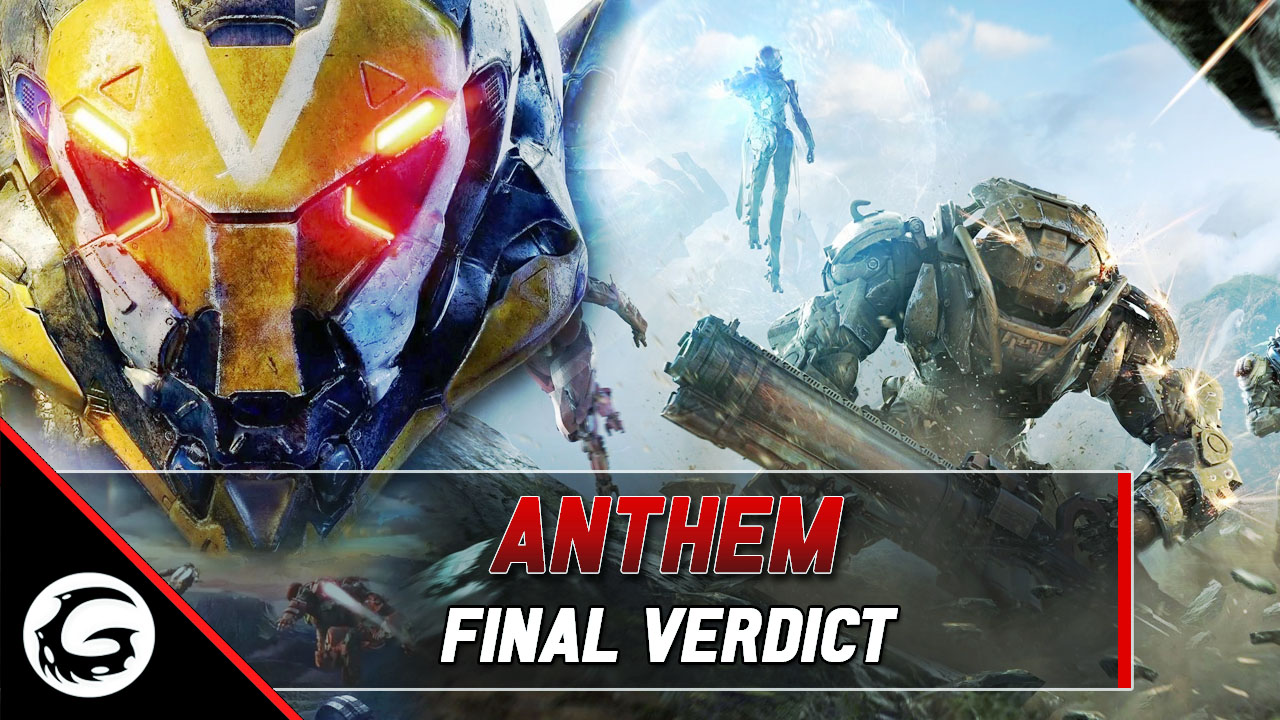

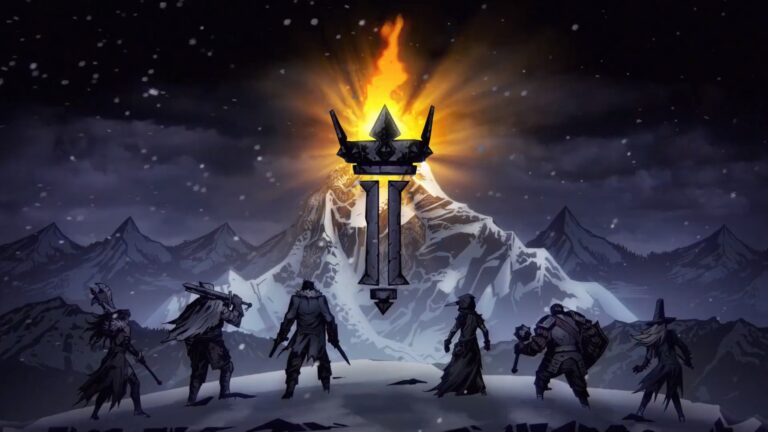
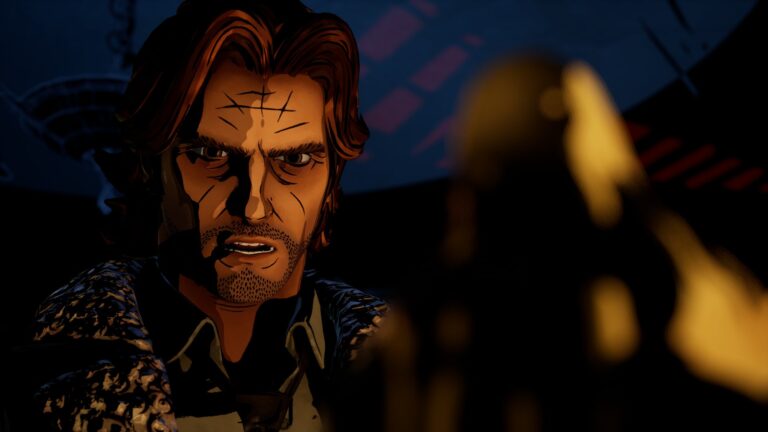

[…] ANTHEM: THE FINAL VERDICT – OUR REVIEW […]
[…] ANTHEM: THE FINAL VERDICT – OUR REVIEW […]